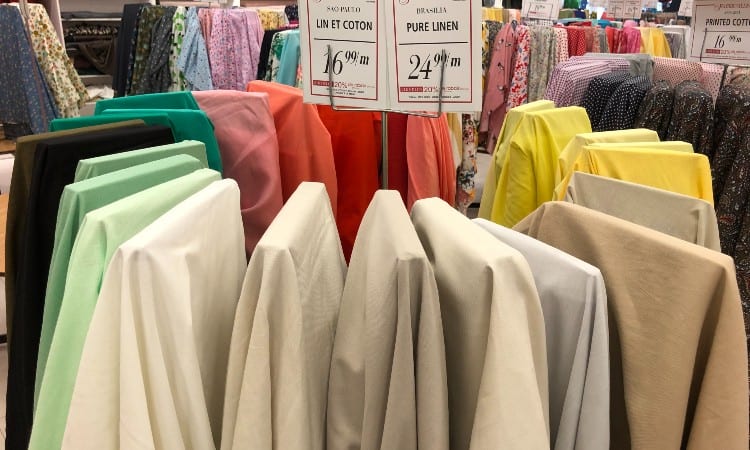Do you hate putting on a damp swimsuit multiple days in a row while on vacation? Or do you like to go backpacking and want a jacket that will dry before you pack up your campsite each morning? Either way, you need to learn about the best quick-drying fabrics for clothes!
Quick-dry synthetic fabrics use a special weaving technique that creates spaces between the yarns so small that water molecules cannot pass through, but smaller air molecules can flow through. This forms a water-resistant surface on the fabric. Many quick-dry fabrics for clothes also have good moisture-wicking abilities.
In this article, you will learn how quick-dry fabrics function. You will discover the best types of quick-dry fabrics for clothes. Finally, you will find tips on picking the best quick-dry fabrics for travel or swimwear.
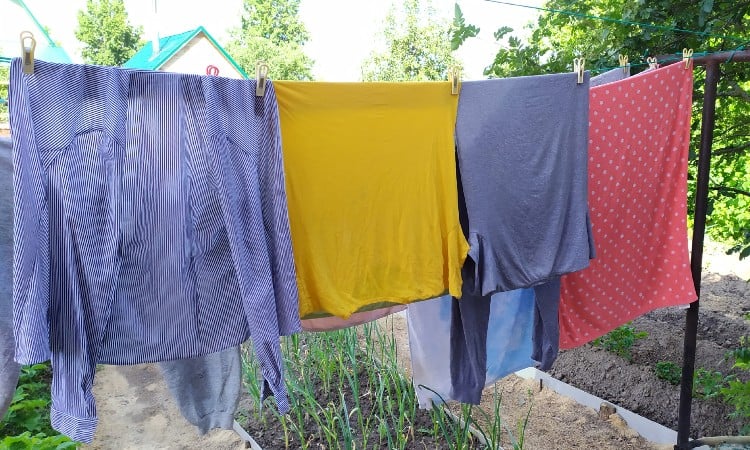
What is Quick Dry Fabric?
Quick-dry fabric can dry fully after exposure to moisture in less than two hours. When you see the term “quick dry” applied to clothes or fabric, it usually means a special synthetic material designed to promote moisture-wicking and dry quickly. Some natural fabrics have innate quick-drying abilities but do not dry as fast.
Manufacturers often use the terms “quick dry” and “moisture wicking” or even “moisture management” to mean the same thing–a synthetic fabric designed with a unique structure that can manipulate moisture.
So, how does this work? Quick dry fabrics use a textile technology called capillary action. The shape and spacing of the yarns within the fabric act like capillaries to force water molecules from the inside of the fabric, where it touches your skin, to the outside, where the water quickly evaporates into the air.
Because of the careful design of the yarn structure, most quick-dry fabrics also have a hydrophobic nature, meaning that the fibers inside the yarns do not easily soak up water. This makes sense because if the threads soaked up and hung onto the water, the fabric would not dry quickly!
This explains why technically, natural fabrics like cotton do not qualify as “quick dry” in the same sense as a carefully designed high-performance polyester. Cotton has an innate absorption ability, meaning its fibers will quickly soak up water. But cotton also dries quite rapidly and can function as quicker-drying material in some cases because of its breathability, as you will see later in this article.
The science of creating just the right thread structure to produce this moisture-wicking property has developed a lot in recent years. You see quick-dry or moisture-wicking properties touted for a lot of athletic wear today, especially in running and hiking gear.
For example, if you wear a moisture-wicking running shirt that clings to your skin, it should feel cooling and carry your sweat away even as you work hard on your morning jog!
Another thing to consider when choosing quick-drying clothing is that the weight of the fabric will also speed up or slow down the drying time. For example, a thin cotton dress will dry faster than a soft, thick cotton-knit t-shirt because the extra thickness of the tee will trap in more moisture.
Best Quick Drying Fabrics for Clothes

When you pick the best quick-drying fabrics for your clothes, consider what purpose you want the garment to serve. Do you need a moisture-wicking fabric to remove sweat from your skin as you exercise? Or do you need swimwear that will repel moisture and quickly dry out after your day at the beach?
Many different types of fabrics offer varying levels of moisture-wicking and quick-drying abilities, and some work better for specific purposes than others.
Natural Quick-Drying Fabric
Natural quick-drying fabrics include bamboo, cotton, linen, and wool. Natural fabrics contain fibers produced naturally by plants or animals, like wool from sheep or linen from flax plants. These materials do not dry in the same way as a synthetic fabric engineered specifically to trap and shape moisture flow within the material, but they offer another ability in exchange: excellent breathability.
Many natural fabrics like cotton have fibers that allow air molecules to whisk in and out through the fabric. As you might expect, the easy movement of air can dry fabric quickly.
Cotton
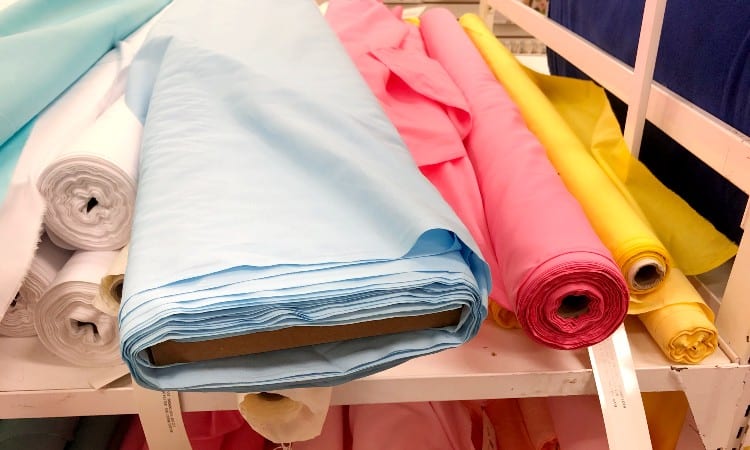
Cotton dries faster than any other natural fabric except wool, but it is not technically a “quick dry” material because it lacks moisture-wicking abilities. When you wear a cotton t-shirt while working out, the cotton fibers will suck up all the moisture from your sweat. But instead of pushing the water molecules to the outside of the fabric for quick evaporation, the thirsty cotton fibers will soak up the water and hang onto it, leaving you with a damp, clinging shirt stuck to your skin.
The trick here is that cotton fibers also have a unique shape that allows air molecules to flow through them. Because of this, the air will dry the wet cotton much more quickly than a wet piece of silk or bamboo fabric. The exact drying time of a cotton garment will depend on the thickness of the material and the quality of air in the drying space, but some types of cotton fabric will fully dry in under two hours.
For practical purposes, you may want to consider soft, breathable cotton for lightweight summer clothes as you pack for a trip. Even though the clothing is not the best choice for athletic wear, it will dry in less than two hours if you need to wash it out in your hotel room and hang it up to dry overnight!
Linen
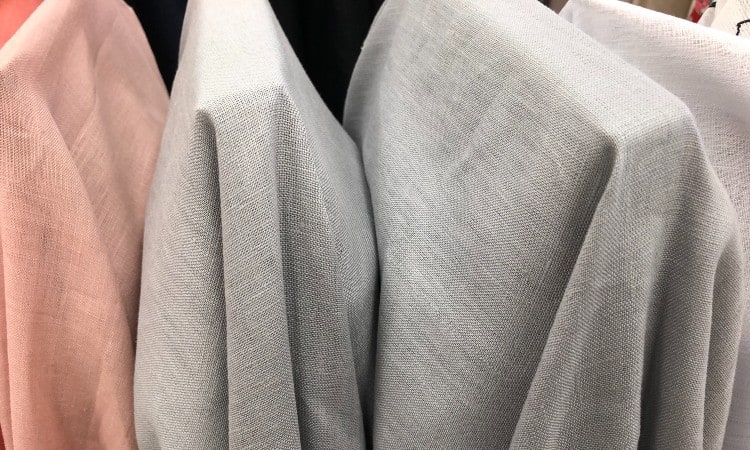
Like cotton, linen fabric comes from a plant and its fibers have a remarkable level of breathability. Depending on the weight of the fabric, linen can often fully dry in around three hours. You do have to take extra precautions with this more fragile material, though–it should not go in a dryer or hang to dry in full sunlight.
Linen also has a high absorption rate and can soak up a lot of moisture when exposed to rain, sweat, or water in the washing machine. But the material’s breathability also allows all that moisture to dry rapidly.
The challenge with getting linen to dry quickly is that it also wrinkles easily and requires careful handling. So you can bring a linen suit with you on a business trip, but try to avoid walking through a rainstorm on your way to a meeting!
Wool
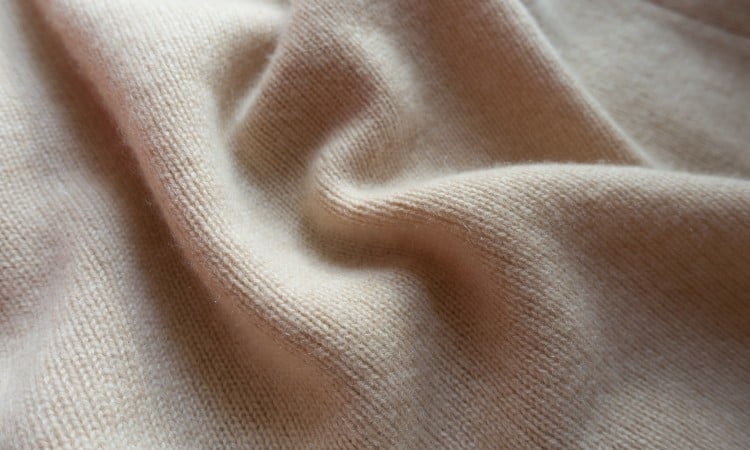
Wool dries so quickly that many clothing brands use it as readily as specially-designed synthetics for quick-drying purposes! In fact, unlike most natural fabrics, wool can moisture-wick, making it a good choice for some athletic apparel. Lightweight wool clothing like hiking socks or a merino wool running shirt should fully dry in under two hours.
Of course, as you know, if you have ever waited for a sweater to finish drying, thick, knitted wool garments can take much longer to dry. But this is the case for any type of material, as added thickness leads to increased drying time.
Why does wool fabric work so differently from other natural fabrics? The shape of wool fibers allows them to siphon moisture from your skin to the external surface of the garment, where the water molecules can quickly evaporate into the air. But unlike many synthetic fabrics, wool also has great breathability. This makes it an expensive but effective alternative for many types of athletic wear.
You do have to allow wool clothing to air dry, though. Putting anything made of wool into the dryer will cause the wool fibers to hook together and turn into a compacted felt!
Bamboo
 Depending on the structure of the fabric, bamboo clothes can dry very quickly. Bamboo fibers contain almost-invisible holes that allow airflow and breathability, leading to a shortened drying time compared to many other natural fabrics.
Depending on the structure of the fabric, bamboo clothes can dry very quickly. Bamboo fibers contain almost-invisible holes that allow airflow and breathability, leading to a shortened drying time compared to many other natural fabrics.
That said, bamboo fabric also can soak up twice as much moisture as cotton fabric, so it can have some moisture retention because of that absorption rate. Bamboo does not dry as quickly as cotton after it gets wet. Plus, the tensile strength of the fabric weakens when wet, so you have to avoid twisting or tearing it when washing it.
Bamboo fabric also has thermoregulatory properties, which is a fancy way of saying that it allows airflow that can cool you down when you get hot. Bamboo fibers have a cross-sectional shape that can trap heat, insulating you when you need warmth.
Synthetic Quick Drying Fabrics
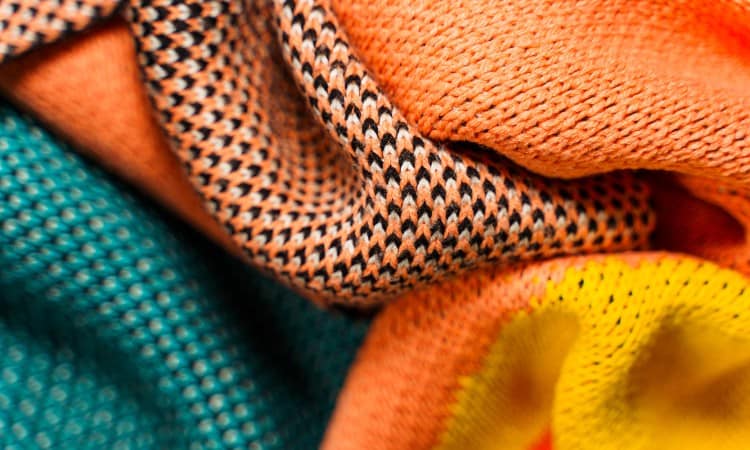
Synthetic quick-drying fabrics include materials like polyester and nylon. Unlike natural fabrics, these materials come from synthesized chemicals and do not exist in the natural world. One of the benefits of this manmade method of producing fabric is that, over time, scientists have developed techniques to give some synthetic fabrics unique properties, such as moisture wicking and quick drying.
The bottom line with synthetic fabric drying speeds is that it depends on the construction of the cloth in that particular garment. For example, polyester generally has a rapid drying speed, but an old double-knit polyester from the 70s will dry much more slowly than a modern performance apparel sports jersey.
One slightly confusing aspect of synthetic quick-dry fabrics is that many fabric manufacturers also use proprietary brand names for their material, such as Gore-Tex. These synthetics contain polyester or nylon fibers but go by a special name.
If you can’t tell what kind of fibers the fabric contains from its name, the best way to know if a garment or type of synthetic fabric will dry quickly or not is to look for the keywords “moisture wicking” or “quick dry” in the product description.
Polyester
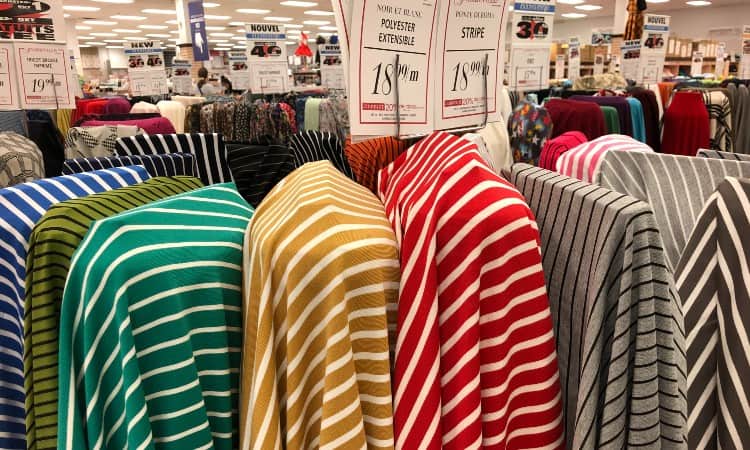
Polyester fabric dries faster than any other material under most circumstances and can fully dry in one hour or less in some instances. This is largely due to the hydrophobic nature of polyester fibers, which do not easily absorb moisture. Individual polyester fibers or polymers essentially have the same chemical structure as a tiny piece of plastic.
This does mean that polyester material lacks breathability. But high-performance polyester garments make up for this with incredible moisture-wicking abilities.
If you took a microscopic view of this type of polyester fabric, you would see carefully engineered channels in the material that can carry moisture from the inside of the fabric to the outside. Instead of soaking into the surface of the fabric, the moisture then evaporates because polyester resists absorbing water.
Whether or not you like the feel of polyester clothing is a personal preference, as some people prefer the natural softness and breathability of cotton clothes. But polyester will unquestionably dry much faster than cotton and even considerably faster than most synthetic fabrics.
One last important thing to note about polyester is that because of its extreme popularity, you can find many different types of material made out of polyester fibers. These include super fine and lightweight polyester material like microfiber, which can dry faster than regular polyester material!
Polyester/Rayon
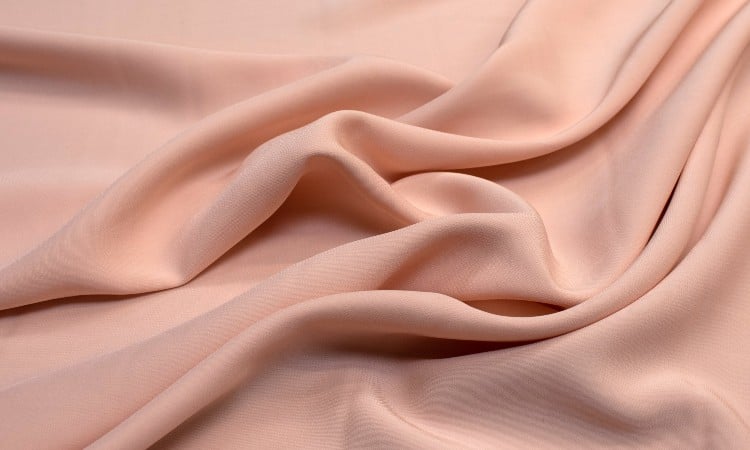
Another popular type of synthetic fabric for clothing is a blend of polyester and rayon fibers that produces a fairly quick-drying material.
On its own, rayon does not have good moisture-wicking abilities. If you wear it in hot weather, it can feel smothering because it will trap a layer of moisture against your skin. But when blended with polyester, the polyester fibers perform moisture wicking and the rayon fibers add a soft, silky element to the cloth.
Poly-rayon does not dry as quickly as polyester by itself, but it dries much faster than plain rayon, which can take 6 hours to fully dry!
Polypropylene
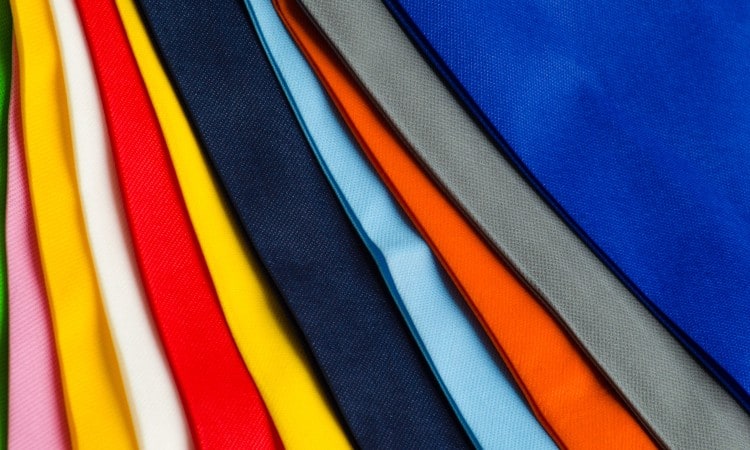
Polypropylene fabric deserves special mention as a unique type of polyester that dries super fast. Unlike most polyester, this type of fabric, sometimes just called PP, undergoes an extra round of polymerization during manufacturing. It becomes a flexible plastic, but a complex extrusion and weaving process can also turn it into a fabric.
Popular uses for this fabric include outdoor items like patio furniture upholstery and select garnet types like sportswear apparel.
This material has a more plasticky feel than other polyester, but it can also provide greater strength and water resistance. This fabric dries as fast as the moisture can sluice away because it does not absorb any water.
Nylon
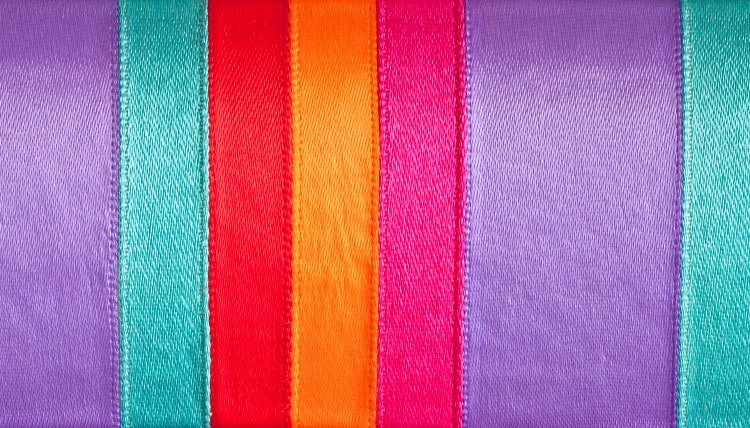
Nylon takes longer to dry than polyester, though a lightweight nylon garment can dry outside in under two hours. Inside, nylon may take four to six hours to air-dry, a bit longer than the average polyester garment.
Like most synthetic fabrics, nylon has pretty good water resistance. But it does absorb close to 4% of the water it touches. This explains why it dries more slowly than a hydrophobic fabric like polyester.
One of the tricky things about nylon is that you often can’t place this material in the dryer. This can make polyester clothing more practical for easy care.
However, one of the big advantages of nylon is that it has good tensile strength and durability and can resist abrasions. It also has good elasticity and recovery, meaning you can stretch it out and it will shrink back to its original shape when you let go. Both of these properties make nylon a great fabric choice for swimwear.
Spandex
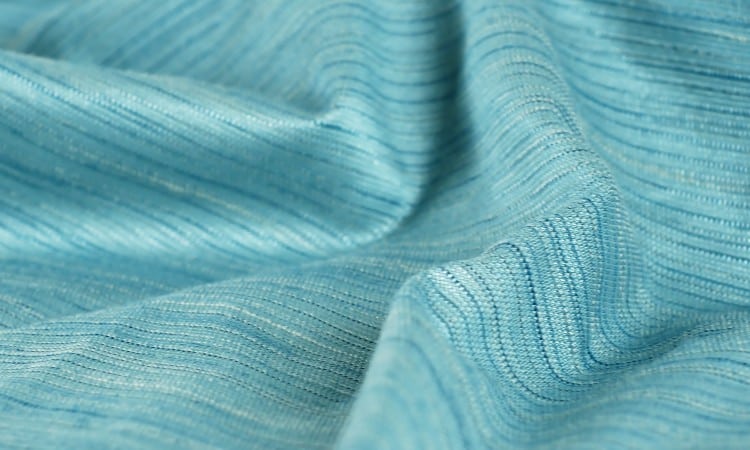
Spandex is a brand name for fabric made of elastane fibers or elastic particles. This super stretchy material does not absorb water and can quickly dry. You could wear a spandex shirt in the rain, wipe off the water, and feel dry in as little as fifteen minutes!
The catch here is that you usually do not have clothing made entirely from spandex. Instead, you blend these stretchy fibers into another type of cloth, such as cotton or polyester.
You then have to consider how fast the blended material will dry, which can vary a lot based on the type of fibers and the thickness of the cloth.
Tencel
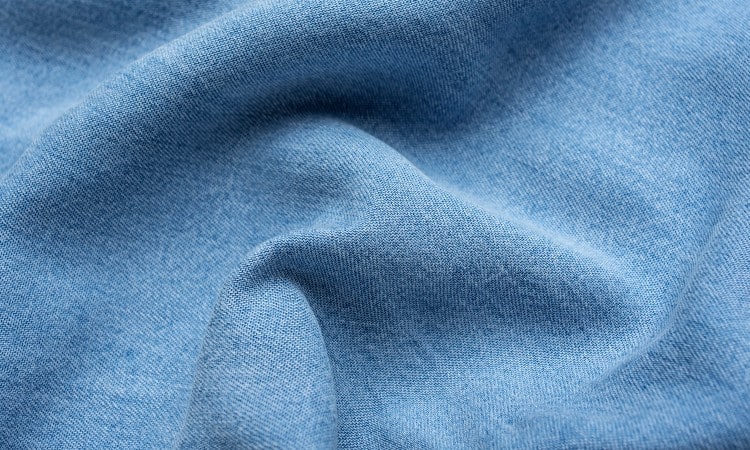
Tencel fabric is a proprietary name for a type of rayon made out of partially synthesized, sustainably sourced wood. The key difference between Tencel and garden-variety rayon is in the careful, eco-friendly production processes used by this brand.
However, Tencel does not dry any faster than regular rayon. If you hang it up to air dry outdoors, it will dry in two hours, much like cotton. But indoors, it may take 6 hours or more, depending on the thickness of the cloth.
Which Fabric Dries Faster?
Check out this quick guide to find out which fabrics dry faster. When it comes down to it, you may need the quickest drying fabric for a particular type of garment.
Nylon or Polyester
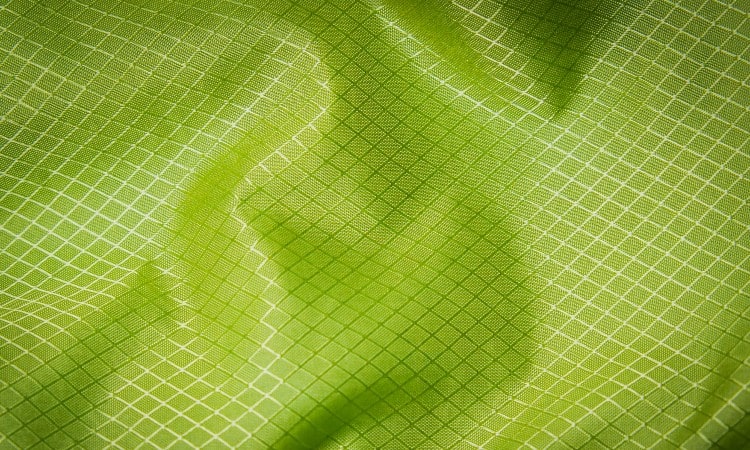
When you compare nylon vs polyester, polyester dries much faster. Of course, this depends on the structure of the fabric, as you now know! Drying speed can also vary depending on the thickness of the fabric in individual garments.
Both polyester and nylon make a good choice for athletic wear because they can both provide moisture-wicking to cool you by wicking away sweat. Nylon is also a popular choice for swimwear because of its durability and elasticity.
But polyester fibers absorb less moisture than nylon fibers, making polyester the fastest-drying synthetic fabric.
Linen dries faster than cotton because it generally features a looser weave, producing greater airflow. Both cotton and linen can absorb a lot of moisture, and neither one provides moisture-wicking. Instead, these fabrics dry quickly because of their excellent breathability.
For cotton, the drying speed can depend heavily on the construction of the material. Cotton remains one of the most popular fabrics for apparel in the world. This means you can find cotton in many different types of fabric, like denim, corduroy, and lawn. A plain-weave, very light fabric like a cotton lawn could air dry in under two hours, but a thick, twill-weave material like denim will likely take much longer.
Linen can dry quickly, but the downside is that you cannot speed up the process by placing it in your dryer. Cotton, on the other hand, can endure the high heat of the dryer just fine!
Polyester or Spandex
Technically, 100% spandex dries faster than 100% polyester. That said, few garments outside of support underwear contain pure spandex, largely because it has a unbreathable nature on its own. Instead, a blend of spandex and another material will create a more breathable and comfortable but also stretchy fabric.
Even though it dries fast because it does not absorb water, spandex does not moisture-wick sweat away from your skin.
Polyester is the most used material for athletic wear in the world, mainly because it does have good moisture-wicking abilities.
Polyester or Wool
Polyester dries faster than wool, but both materials provide good moisture-wicking abilities. Unlike most natural fabrics, wool does have some water resistance, though when soaked, it absorbs a great deal of moisture.
Wool dries at varying rates depending on the weight of the material. But if you compare a polyester and wool garment made out of the same weight and thickness of the material, the polyester garment will dry much more quickly because it absorbs less water.
What is the Fastest Drying Setting on a Dryer?
The fastest drying setting on most dryers is the regular or heavy setting. Some dryers may specifically read “high heat” or “quick dry” as well. The exact temperature of a regular setting will vary from one model to another, but many dryers reach an internal temperature of 135℉.
Many dryers have several slower drying, low-heat settings for fabrics that cannot handle extreme heat. These settings include tumble dry, air dry, permanent press, and delicates.
Best Quick Drying Clothes for Travel
 The best quick-drying clothes for travel will contain a moisture-wicking fabric like polyester or nylon. If you want garments, you can hang them up to drip dry overnight in a hotel room or at a campsite. You may even want to specialize in the type of polyester you pick and look for the finest, lightest versions, like clothing made of microfiber.
The best quick-drying clothes for travel will contain a moisture-wicking fabric like polyester or nylon. If you want garments, you can hang them up to drip dry overnight in a hotel room or at a campsite. You may even want to specialize in the type of polyester you pick and look for the finest, lightest versions, like clothing made of microfiber.
This pair of Gopune lightweight hiking pants, perfect for backpacking cross country, features 92% nylon and 8% spandex.
This Perry Ellis jacket contains lightweight microfiber for wind and rain resistance and quick drying speeds.
Natural fabrics like cotton and linen can dry quickly if you choose lightweight clothing. One pro tip for travelers is to hang wet clothes in a spot with good air circulation, so the air can travel through the breathable material and remove the water even more quickly!
Best Quick Dry Clothes for Water Sports
 The best quick-dry clothes for water sports use materials like nylon and polyester. You can find everything from board shorts to swimsuits to body suits to paddle jackets made out of these synthetic, sturdy, moisture-wicking materials.
The best quick-dry clothes for water sports use materials like nylon and polyester. You can find everything from board shorts to swimsuits to body suits to paddle jackets made out of these synthetic, sturdy, moisture-wicking materials.
For example, this set of Baleaf women’s swim trunks contains polyester and elastic elements. This Naviskin swim guard long-sleeve shirt for men contains 100% polyester.
Pretty much all clothing made for water sports uses synthetic materials today. Natural fabrics like cotton absorb water rather than repelling it, which makes them unsuitable for this environment.
Conclusion
The best quick-drying fabric for clothes contains synthetic fabrics like polyester and nylon with high moisture-wicking abilities. These materials do not absorb a lot of water. They can also push water molecules to the surface of the fabric to evaporate into the air.
Natural fabrics like cotton and linen absorb water but also have great air permeability or breathability, allowing the airflow to quickly dry the cloth. Overall, the fastest-drying material commonly used in clothing is polyester.
What techniques do you use to dry your clothing quickly? Do you find that they work better on certain types of fabric? Leave a comment below to let us know!
